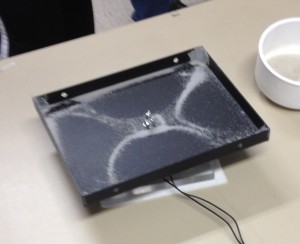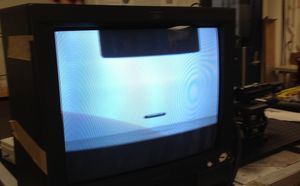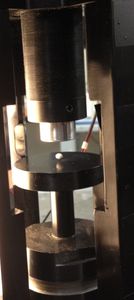Today in physics we went to visit the lab of my favorite bubbleologist. Although we went as part of our study of acoustics, the lab, which belongs to Professor Glynn Holt studies all kinds of acoustic, wave, and bubble related phenomena.
Our guide through this study was Enrique Gutierrez (who I need to chat with more. He is from Mexico and just bought a LEGO Robotics kit for his son, and his lab is across from my robotics lab). He started out by giving us a demonstration of transverse and longitudinal standing waves. From there, he ventured into two-dimensional standing waves on a plate (Chladni patterns). Click this if you want to learn how a violin works!!
Next we got to see Faraday waves in a Chinese Sprouting Bowl. Although Faraday worked out the mathematics of these two dimensional waves, the Chinese have had the sprouting bowls for much longer. And even longer than that, the Alligator uses Faraday waves as a method of communication which is a current area of study in the Holt Lab.
The highlight of our tour was acoustic levitation. In other words, they would use sound waves to levitate a bubble. Professor Holt studies bubbles under all kinds of conditions. He flew some bubbles on reduced gravity flights with NASA and was trained as a Mission Specialist for the Astronaut program. I owe him a big favor for helping to develop my own NASA Reduced Gravity flight proposal. Here is is now using sound waves to levitate bubbles.
Her, the amplitude of these sound waves (which are longitudinal) are so strong that they actually compress the wave.
Enrique even levitated a piece of dust for us.








